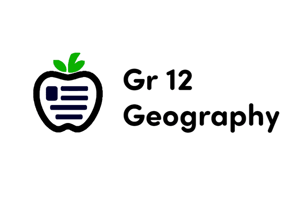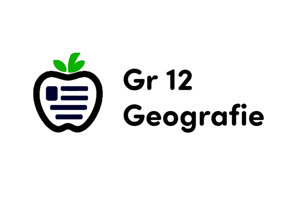Podcast
Questions and Answers
Which of the following conditions is most directly caused by anti-cyclones?
Which of the following conditions is most directly caused by anti-cyclones?
- Strong, localized storm systems
- Increased cloud cover and frequent rainfall
- High humidity and unstable air masses
- Stable atmospheric conditions and clear skies (correct)
Anti-cyclones rotate clockwise in the Southern Hemisphere.
Anti-cyclones rotate clockwise in the Southern Hemisphere.
False (B)
What is the general direction of air circulation in an anti-cyclone?
What is the general direction of air circulation in an anti-cyclone?
Anti-clockwise and outward
South Africa experiences anti-cyclones due to its location beneath the sub-tropical ______ pressure belt.
South Africa experiences anti-cyclones due to its location beneath the sub-tropical ______ pressure belt.
Match each anti-cyclone with its primary location:
Match each anti-cyclone with its primary location:
Which of the following best describes the impact of the Kalahari Anti-Cyclone's inversion during winter?
Which of the following best describes the impact of the Kalahari Anti-Cyclone's inversion during winter?
The South Atlantic Anti-Cyclone always remains stationary throughout the year.
The South Atlantic Anti-Cyclone always remains stationary throughout the year.
During which season is the Kalahari Anti-Cyclone typically located in the upper air, rather than on the surface?
During which season is the Kalahari Anti-Cyclone typically located in the upper air, rather than on the surface?
An approaching cold front in winter can intensify when it ridges in behind the ________.
An approaching cold front in winter can intensify when it ridges in behind the ________.
What role does the escarpment play in the formation of the winter inversion associated with the Kalahari Anti-Cyclone?
What role does the escarpment play in the formation of the winter inversion associated with the Kalahari Anti-Cyclone?
Line thunderstorms are primarily caused by the daytime heating of the Earth's surface.
Line thunderstorms are primarily caused by the daytime heating of the Earth's surface.
What is the primary difference between a moisture front and a mid-latitude cyclone?
What is the primary difference between a moisture front and a mid-latitude cyclone?
What type of winds are created on the western side of a coastal low, often bringing rain and fog?
What type of winds are created on the western side of a coastal low, often bringing rain and fog?
Berg winds are created when are subsides from the plateau and down the ________.
Berg winds are created when are subsides from the plateau and down the ________.
Which condition often replaces the hot and dry conditions caused by berg winds?
Which condition often replaces the hot and dry conditions caused by berg winds?
Flashcards
Anti-cyclones
Anti-cyclones
High pressure, anti-clockwise rotating cells influencing South African weather.
Travelling disturbances
Travelling disturbances
Weather occurrences associated with anti-cyclones.
Characteristics of anticyclones
Characteristics of anticyclones
Large weather systems, 3000-4000km in diameter, always present with slightly changing positions.
General characteristics of anticyclones
General characteristics of anticyclones
Signup and view all the flashcards
Anticyclones on Synoptic Charts
Anticyclones on Synoptic Charts
Signup and view all the flashcards
Three anticyclones affecting South Africa
Three anticyclones affecting South Africa
Signup and view all the flashcards
Inversion Layer
Inversion Layer
Signup and view all the flashcards
Winter Inversion Formation
Winter Inversion Formation
Signup and view all the flashcards
Winter Atmospheric Conditions
Winter Atmospheric Conditions
Signup and view all the flashcards
Summer Anticyclone Position
Summer Anticyclone Position
Signup and view all the flashcards
Summer Air Movement
Summer Air Movement
Signup and view all the flashcards
Moisture Front Definition
Moisture Front Definition
Signup and view all the flashcards
Moisture Front Formation
Moisture Front Formation
Signup and view all the flashcards
Coastal Low Definition
Coastal Low Definition
Signup and view all the flashcards
Berg Wind Definition
Berg Wind Definition
Signup and view all the flashcards
Study Notes
- Anti-cyclones are high-pressure, anti-clockwise rotating cells
- They have a significant influence on South African weather
- South Africa experiences these due to its location beneath the sub-tropical high pressure belt
- These cells contribute to the semi-arid conditions in South Africa
Travelling Disturbances
- The study of anti-cyclones includes associated weather events
General Anti-Cyclone Characteristics
- Large systems, spanning 3000km to 4000km in diameter
- Present throughout the year, though positions may shift slightly
- Air circulates anti-clockwise and outward, descending from these cells
- Descending air promotes stable atmospheric conditions, clear skies, and sunshine
Three Anti-Cyclones Affecting South Africa
South Atlantic Anti-Cyclone (SAAC)
- Located off Namibian coast
- Semi-permanent and semi-stationary
- Changes are seasonal, linked to the seasonal shift of ITCZ
- Brings clear, stable weather
- Air moves anti-clockwise
- Cool, dry air affects western and southern coasts
- Can deflect mid-latitude cyclones in summer
Kalahari Anti-Cyclone
- Located above the central plateau
Summer
- Warmer temperatures above the plateau
- Inversion forms above escarpment
- Moist air flows from the Indian Ocean inland, resulting in rainfall
Winter
- Temperatures drop
- Cool, dense air sinks inland
- Sinking air compresses and heats, causing warmer lower layers
- Inversion forms below the escarpment
- Pressure system prevents warm air from the Indian Ocean from entering
South Indian Anti-Cyclone (SIAC)
- Located off east coast of South Africa
- Semi-permanent and semi-stationary
- Air moves anti-clockwise
- Close to SA, brings moist winds to the coast
- Air blows over warm ocean
- Warmer, moist onshore winds occur and cooler land causes precipitation
Inversion Layers
- Created by descending air that warms as it descends
- Present year-round, higher in summer (approx. 2000m above sea-level) than winter (approx. 1000m above sea-level)
Summer
- Temperatures increase, causing air to rise and reduce pressure
- Kalahari anti-cyclone displaced, lifting the inversion layer approx. 2000m
- This allows warm moist air from the Indian Ocean to feed the thermal low, causing clouds and rain
Winter
- Absence of thermal low increases the power of subsiding air from the Kalahari anti-cyclone
- The Kalahari anti-cyclone becomes dominant, pushing inversion layer down to approx. 1000m
- Effectively puts a lid on moisture trying to reach South Africa's interior
- This generally creates dry atmospheric conditions in winter
Winter Conditions
- Anticyclones positioned northerly, allowing cold fronts to affect South Africa
- Mid-latitude cyclones closer to the southern coast
- Frontal rainfall over south-western Cape
- Interior is cool, dry, and clear due to Kalahari anti-cyclone dominance
- Inversion layer forms below escarpment
- Berg wind conditions develop
Summer Conditions
- Anticyclones position southerly, preventing cold fronts from affecting the country
- Kalahari anticyclone is in upper air, not on the surface
- Warm air rises, forming thermal low, causing thunderstorms over the interior
- Warm, moist coast air moves to the escarpment, bringing clouds and rain inland
- Temperatures and humidity are higher
- Moisture front and squall line thunderstorms develop
Travelling Disturbances
- Pertains to adjacent weather phenomenon
Moisture Front & Line Thunderstorms
- Moisture front cross-section is similar to a mid-latitude cyclone, but moisture fronts differ by bashing head-on
- Develop with thermal/heat low pressure and a coastal low over South Africa
- Low-pressure trough feeds moist air into the interior in summer when low pressure dominates
- Moisture front develops when cool, dry air meets warm, moist air
- Cool air lifts warm air, cooling adiabatically, condensing, and forming cumulonimbus clouds
- Rain falls northeast of the moisture front, with little rain falling to the southwest
Negative impacts
- Summer thunderstorms cause damage
- Torrential downpours can cause flooding
- Hail, thunder, and lightning can damage property and crops
Positive Impacts
- May replenish water in dams, relieving drought
- Heat and pressure from ligtning turns nitrogen into natural fertilizer
Line Thunderstorms
- Develop along moisture front, often when a thermal low-pressure cell and coastal low-pressure cell are located over South Africa
- Pressure trough feeds warm, moist air from the northeast interior, converging with cold, dry air from the southwest
- Cold air lifts warm air, cooling adiabatically, condensing, and forming tall cumulonimbus clouds
- Can occur at night, not caused by heating of the atmosphere directly, but convergence of two air masses
- Replenish dams and relieve drought
- Heat and pressure convert nitrogen in the air into natural fertilizer
Coastal Low-Pressure Systems
- Small low-pressure system occurring on the west coast, moving east
- Not associated with fronts, occurring entirely within the warm sector of a mid-latitude cyclone
- Clockwise circulation around a coastal low creates onshore winds on its western side (bringing rain and fog) and offshore winds on its eastern side (clear conditions)
- Different weather will occur on either side of the low
West Coast
- Onshore winds cold and dry with limited moisture
- Offshore winds warm and dry with no moisture
East Coast
- Onshore winds warm with moisture, causing rainfall
- Offshore winds warm and dry with limited moisture
- Systems move from west to east along the coastline
Berg Winds
- Develop during winter, bringing gusty, hot, and dry winds
- Berg wind conditions occur ahead of the mid-latitude cyclones,.
- Air flows from the Kalahari High-Pressure cell to the coastal low-pressure
- Air subsides from the plateau and down the escarpment (off-shore winds), heating and drying adiabatically
- Can cause uncomfortable, dry, and hot conditions
- Cold conditions can replace the hot quickly
- Encourages veld fires
Reading and Interpreting Satellite Images and Weather Maps
-
Large high-pressure systems associated with fair weather appear as large cloudless areas
-
Berg wind marked by plume of dust going out to sea
-
Line thunderstorms and associated low-pressure trough appear as a band of cloud covering across the country from south-east to north-west
-
Coastal low appears as a patch of cloud on the coast
-
The anticyclones appear as large systems of isobars, with an H in the centre
-
A berg wind presents with offshore winds and higher temperatures ahead of a cold front
-
Ridging isobars indicate high temperatures and extending pressures
-
Coastal low displays relatively low pressures on the coast
-
South easterly winds are parallel in isobar direction
Studying That Suits You
Use AI to generate personalized quizzes and flashcards to suit your learning preferences.




